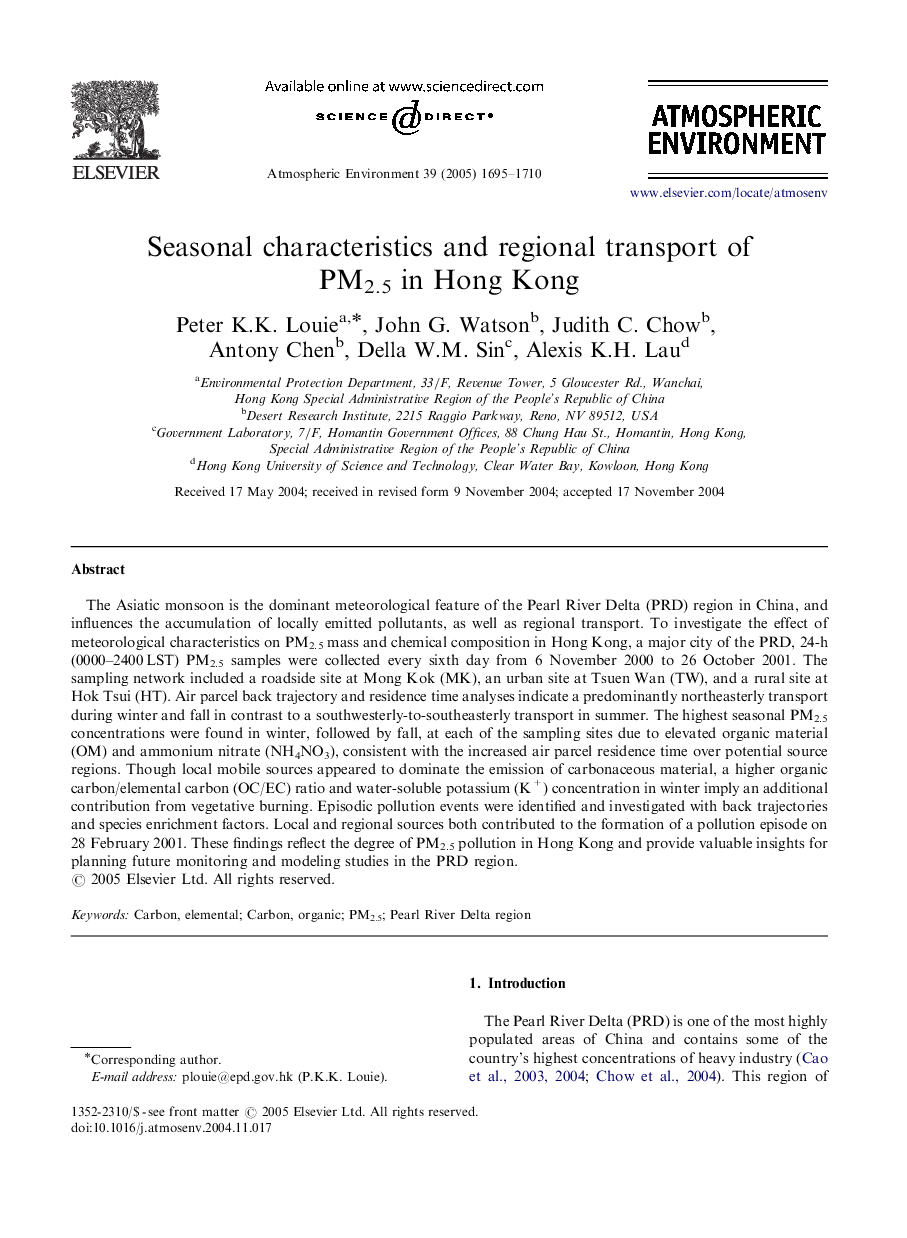| Article ID | Journal | Published Year | Pages | File Type |
|---|---|---|---|---|
| 9458754 | Atmospheric Environment | 2005 | 16 Pages |
Abstract
The Asiatic monsoon is the dominant meteorological feature of the Pearl River Delta (PRD) region in China, and influences the accumulation of locally emitted pollutants, as well as regional transport. To investigate the effect of meteorological characteristics on PM2.5 mass and chemical composition in Hong Kong, a major city of the PRD, 24-h (0000-2400Â LST) PM2.5 samples were collected every sixth day from 6 November 2000 to 26 October 2001. The sampling network included a roadside site at Mong Kok (MK), an urban site at Tsuen Wan (TW), and a rural site at Hok Tsui (HT). Air parcel back trajectory and residence time analyses indicate a predominantly northeasterly transport during winter and fall in contrast to a southwesterly-to-southeasterly transport in summer. The highest seasonal PM2.5 concentrations were found in winter, followed by fall, at each of the sampling sites due to elevated organic material (OM) and ammonium nitrate (NH4NO3), consistent with the increased air parcel residence time over potential source regions. Though local mobile sources appeared to dominate the emission of carbonaceous material, a higher organic carbon/elemental carbon (OC/EC) ratio and water-soluble potassium (K+) concentration in winter imply an additional contribution from vegetative burning. Episodic pollution events were identified and investigated with back trajectories and species enrichment factors. Local and regional sources both contributed to the formation of a pollution episode on 28 February 2001. These findings reflect the degree of PM2.5 pollution in Hong Kong and provide valuable insights for planning future monitoring and modeling studies in the PRD region.
Keywords
Related Topics
Physical Sciences and Engineering
Earth and Planetary Sciences
Atmospheric Science
Authors
Peter K.K. Louie, John G. Watson, Judith C. Chow, Antony Chen, Della W.M. Sin, Alexis K.H. Lau,
